This site uses cookies as defined in our Cookie Policy, by continuing to use this site you agree to their use.
Continue
| Arrive | Depart | ||||||
| 25th25 | MayMay | 202525 | Yokohama, Japan, embark on the Diamond Princess | 15:00 | |||
In 1853, a fleet of four American warships under Commodore Matthew Perry sailed into the bay of Tokyo (then Edo) and presented the reluctant Japanese with the demands of the U.S. government for the opening of diplomatic and commercial relations. The following year Perry returned and first set foot on Japanese soil at Yokohama—then a small fishing village on the mudflats of Tokyo bay. Two years later New York businessman Townsend Harris became America's first diplomatic representative to Japan. In 1858 he was finally able to negotiate a commercial treaty between the two countries; part of the deal designated four locations—one of them Yokohama—as treaty ports. In 1859 the shogunate created a special settlement in Yokohama for the growing community of merchants, traders, missionaries, and other assorted adventurers drawn to this exotic new land of opportunity. The foreigners (predominantly Chinese and British, plus a few French, Americans, and Dutch) were confined here to a guarded compound about 5 square km (2 square miles)—placed, in effect, in isolation—but not for long. Within a few short years the shogunal government collapsed, and Japan began to modernize. Western ideas were welcomed, as were Western goods, and the little treaty port became Japan's principal gateway to the outside world. In 1872 Japan's first railway was built, linking Yokohama and Tokyo. In 1889 Yokohama became a city; by then the population had grown to some 120,000. As the city prospered, so did the international community and by the early 1900s Yokohama was the busiest and most modern center of international trade in all of East Asia. Then Yokohama came tumbling down. On September 1, 1923, the Great Kanto Earthquake devastated the city. The ensuing fires destroyed some 60,000 homes and took more than 40,000 lives. During the six years it took to rebuild the city, many foreign businesses took up quarters elsewhere, primarily in Kobe and Osaka, and did not return. Over the next 20 years Yokohama continued to grow as an industrial center—until May 29, 1945, when in a span of four hours, some 500 American B-29 bombers leveled nearly half the city and left more than half a million people homeless. When the war ended, what remained became—in effect—the center of the Allied occupation. General Douglas MacArthur set up headquarters here, briefly, before moving to Tokyo; the entire port facility and about a quarter of the city remained in the hands of the U.S. military throughout the 1950s. By the 1970s Yokohama was once more rising from the debris; in 1978 it surpassed Osaka as the nation's second-largest city, and the population is now inching up to the 3.5 million mark. Boosted by Japan's postwar economic miracle, Yokohama has extended its urban sprawl north to Tokyo and south to Kamakura—in the process creating a whole new subcenter around the Shinkansen Station at Shin-Yokohama. The development of air travel and the competition from other ports have changed the city's role in Japan's economy. The great liners that once docked at Yokohama's piers are now but a memory, kept alive by a museum ship and the occasional visit of a luxury vessel on a Pacific cruise. Modern Large as Yokohama is, the central area is very negotiable. As with any other port city, much of what it has to offer centers on the waterfront—in this case, on the west side of Tokyo Bay. The downtown area is called Kannai (literally, "within the checkpoint"); this is where the international community was originally confined by the shogunate. Though the center of interest has expanded to include the waterfront and Ishikawa-cho, to the south, Kannai remains the heart of town. Think of that heart as two adjacent areas. One is the old district of Kannai, bounded by Basha-michi on the northwest and Nippon-odori on the southeast, the Keihin Tohoku Line tracks on the southwest, and the waterfront on the northeast. This area contains the business offices of modern Yokohama. The other area extends southeast from Nippon-odori to the Moto-machi shopping street and the International Cemetery, bordered by Yamashita Koen and the waterfront to the northeast; in the center is Chinatown, with Ishikawa-cho Station to the southwest. This is the most interesting part of town for tourists. Whether you're coming from Tokyo, Nagoya, or Kamakura, make Ishikawa-cho Station your starting point. Take the South Exit from the station and head in the direction of the waterfront. | |||||||
| 26th26 | MayMay | 202525 | At Sea | ||||
| 27th27 | MayMay | 202525 | Aomori, Japan | 07:00 | 17:00 | ||
Aomori's main event is its Nebuta Matsuri Festival,held August 2 to 7. People come to see illuminated floats of gigantic samurai figures paraded through the streets at night. Aomori's festival is one of Japan's largest, and is said to celebrate the euphoria of post-battle victory, and is thus encouraged to be noisier and livelier than you may have been exposed to in other Japanese festivals. Dancers, called heneto, run alongside the floats, dancing crazily, and you're encouraged to join in. Throughout the year you can enjoy delicious seafood from Aomori Bay, including Oma no Maguro (tuna of Oma), as well as delicious fruits and vegetables (particularly garlic). And come every summer, the town cuts loose to throw the decidedly wild Nebuta Matsuri festival, a frenzied, utterly unaccountable period when normal gets thrown to the wind. | |||||||
| 28th28 | MayMay | 202525 | Sakata, Japan | 08:00 | 17:00 | ||
| 29th29 | MayMay | 202525 | Kanazawa, Japan | 08:00 | 18:00 | ||
The capital of the Ishikawa Prefecture, Kanazawa once rivalled Kyoto and Edo (Tokyo) as a town rich in cultural achievements. Kanazawa escaped destruction during World War II and accordingly has been able to preserve many of the old districts in good shape. The city is famous because of Kenrokuen. Located next to Kanazawa Castle, Kenrokuen is classified as “One of the Three Gardens of Japan”. The garden has an artificial pond, and hills and houses are dotted within the 11.4 hectares. It has Japan’s oldest fountain using natural water pressure and a tea-house dating back to 1774. Close by is the Higashi Chaya Gai Geisha District, designated a National Cultural Asset and the biggest of the Geisha districts of Kanazawa. Some of the houses not only retain the original structure, but still are used as Geisha houses. Some of the streets have traditional shops creating a nostalgic atmosphere. Kanazawa is also known for its lacquer ware, Kutani-style pottery, gold-leaf workmanship and delicately painted silk kimonos. | |||||||
| 30th30 | MayMay | 202525 | Sakaiminato, Japan | 07:00 | 17:00 | ||
Sakaiminato is a small city almost totally surrounded by water: the Sea of Japan to the east, the Sakai Channel to the north and Lake Nakaumi to the west. Across the lake the towns of Matsue and Yasugi offer interesting experiences. Matsue is known as the “Town of Water” next to scenic Lake Shinji and Lake Nakaumi. It has one of the very few wooden castles that still remain in Japan. Touring the castle and boat rides on the Horikawa River and the castle’s moat are popular. Yasugi has the Adachi Museum of Art, a private museum that houses one of the finest collections of contemporary Japanese paintings, but also has a 165,000 square metres garden –with plants and rocks collected by the museum’s founder. Six different gardens show different scenarios depending on the season. These gardens have been selected as “Japan’s best garden” for several years. | |||||||
| 31st31 | MayMay | 202525 | Busan, South Korea | 08:00 | 18:00 | ||
White-sand city beaches and hot-spring resorts may not be everyone's first image of Korea, but these are what Koreans flock to Busan for all year. And there are plenty of opportunities for rest, relaxation, retail therapy, and even a touch of glamour every October with the Busan International Film Festival. Busan's beaches are the big summertime draw but there is plenty to be seen year round. Quintessential experiences include taking some rest and relaxation at a local spa and exploring the Beomeosa temple complex. | |||||||
| 1st01 | JunJun | 202525 | Nagasaki, Japan | 07:00 | 17:00 | ||
Nagasaki city has developed into one of the most important port cities in Japan. During Japan’s period of isolation in the 17th century, Nagasaki played a prominent role in foreign trade relation and only a very few ports were open to restricted numbers of foreign traders. Even though Holland was a major country who conducted trading during this period, Dutch people were only allowed to stay in Dejima Island and were not allowed to have contact with the Japanese people. Today, you will still find the strong influence of Dutch and Chinese culture in the city which is very different from all other cities in Japan. In the more recent history, Nagasaki became the second city after Hiroshima to be destroyed by an atomic bomb towards the end of World War II. From the visit to Atomic bomb museum and peace memorial park, people could understand how chaotic the situation was and the agony that the people in the days have experienced from the damage inflicted by the atomic bomb. It continues to appeal to the world with their wish for world peace. | |||||||
| 2nd02 | JunJun | 202525 | At Sea | ||||
| 3rd03 | JunJun | 202525 | Shimizu, Japan | 09:00 | 18:00 | ||
The salt and pepper cone of Japan's most famous natural landmark won’t fail to take your breath away, as it soars into the sky in a vision of spectacular symmetry. Make sure your camera is fully prepared before you dock in Shimizu’s port, where unparalleled views of the extraordinary Mount Fuji’s dramatic peak await. Take your time to soak up one of Japan's most iconic views, before dipping your toes into the rest of what this destination of tranquil temples has to offer. While there’s a bustling fish market, and a charming amusement park waiting close to the port, most new arrivals immediately set off in pursuit of the best views of Mount Fuji, or to see the stunning panorama on offer from the heights of the Kunozan Toshogu Shrine. Take the cable car up to the top, to experience the tranquillity around the forested shrine, and to enjoy its stunning architecture of deep scarlets and gleaming golds. You can also enjoy heart-stopping views out over the Bay of Suruga, and the tea plantations below. | |||||||
| 4th04 | JunJun | 202525 | Yokohama, Japan, disembark the Diamond Princess | 06:30 | |||
In 1853, a fleet of four American warships under Commodore Matthew Perry sailed into the bay of Tokyo (then Edo) and presented the reluctant Japanese with the demands of the U.S. government for the opening of diplomatic and commercial relations. The following year Perry returned and first set foot on Japanese soil at Yokohama—then a small fishing village on the mudflats of Tokyo bay. Two years later New York businessman Townsend Harris became America's first diplomatic representative to Japan. In 1858 he was finally able to negotiate a commercial treaty between the two countries; part of the deal designated four locations—one of them Yokohama—as treaty ports. In 1859 the shogunate created a special settlement in Yokohama for the growing community of merchants, traders, missionaries, and other assorted adventurers drawn to this exotic new land of opportunity. The foreigners (predominantly Chinese and British, plus a few French, Americans, and Dutch) were confined here to a guarded compound about 5 square km (2 square miles)—placed, in effect, in isolation—but not for long. Within a few short years the shogunal government collapsed, and Japan began to modernize. Western ideas were welcomed, as were Western goods, and the little treaty port became Japan's principal gateway to the outside world. In 1872 Japan's first railway was built, linking Yokohama and Tokyo. In 1889 Yokohama became a city; by then the population had grown to some 120,000. As the city prospered, so did the international community and by the early 1900s Yokohama was the busiest and most modern center of international trade in all of East Asia. Then Yokohama came tumbling down. On September 1, 1923, the Great Kanto Earthquake devastated the city. The ensuing fires destroyed some 60,000 homes and took more than 40,000 lives. During the six years it took to rebuild the city, many foreign businesses took up quarters elsewhere, primarily in Kobe and Osaka, and did not return. Over the next 20 years Yokohama continued to grow as an industrial center—until May 29, 1945, when in a span of four hours, some 500 American B-29 bombers leveled nearly half the city and left more than half a million people homeless. When the war ended, what remained became—in effect—the center of the Allied occupation. General Douglas MacArthur set up headquarters here, briefly, before moving to Tokyo; the entire port facility and about a quarter of the city remained in the hands of the U.S. military throughout the 1950s. By the 1970s Yokohama was once more rising from the debris; in 1978 it surpassed Osaka as the nation's second-largest city, and the population is now inching up to the 3.5 million mark. Boosted by Japan's postwar economic miracle, Yokohama has extended its urban sprawl north to Tokyo and south to Kamakura—in the process creating a whole new subcenter around the Shinkansen Station at Shin-Yokohama. The development of air travel and the competition from other ports have changed the city's role in Japan's economy. The great liners that once docked at Yokohama's piers are now but a memory, kept alive by a museum ship and the occasional visit of a luxury vessel on a Pacific cruise. Modern Large as Yokohama is, the central area is very negotiable. As with any other port city, much of what it has to offer centers on the waterfront—in this case, on the west side of Tokyo Bay. The downtown area is called Kannai (literally, "within the checkpoint"); this is where the international community was originally confined by the shogunate. Though the center of interest has expanded to include the waterfront and Ishikawa-cho, to the south, Kannai remains the heart of town. Think of that heart as two adjacent areas. One is the old district of Kannai, bounded by Basha-michi on the northwest and Nippon-odori on the southeast, the Keihin Tohoku Line tracks on the southwest, and the waterfront on the northeast. This area contains the business offices of modern Yokohama. The other area extends southeast from Nippon-odori to the Moto-machi shopping street and the International Cemetery, bordered by Yamashita Koen and the waterfront to the northeast; in the center is Chinatown, with Ishikawa-cho Station to the southwest. This is the most interesting part of town for tourists. Whether you're coming from Tokyo, Nagoya, or Kamakura, make Ishikawa-cho Station your starting point. Take the South Exit from the station and head in the direction of the waterfront. | |||||||
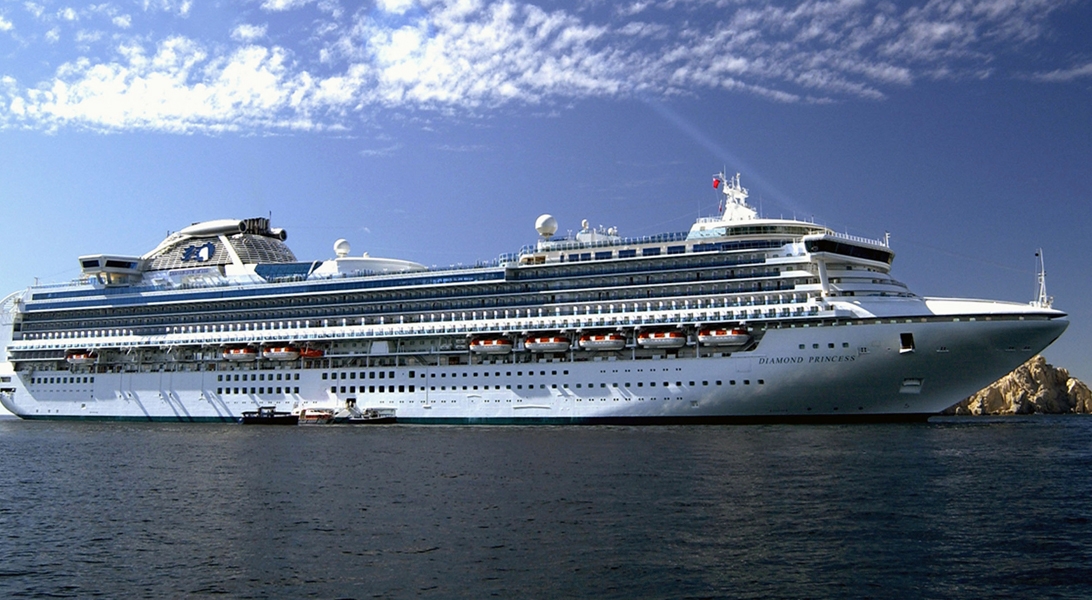
The images shown are for illustration purposes only and may not be an exact representation of what you find on the ship.
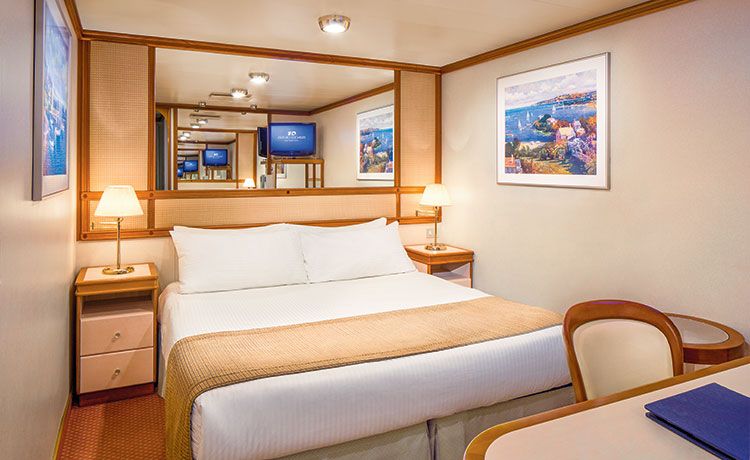
| Grade Code | From | To | |
| IF | Interior | £1,699 | £2,199 |
| IE | Interior | £1,717 | £2,217 |
| ID | Interior | £1,752 | £2,252 |
| IC | Interior | £1,787 | £2,287 |
| IB | Interior | £1,823 | £2,323 |
| IA | Interior | £1,855 | £2,355 |
These staterooms are the perfect place to recharge your batteries. Our most affordable option, featuring two twin beds or a queen-size bed. Other amenities include a refrigerator, hair dryer, TV, closet and bathroom with shower.
Stateroom features:
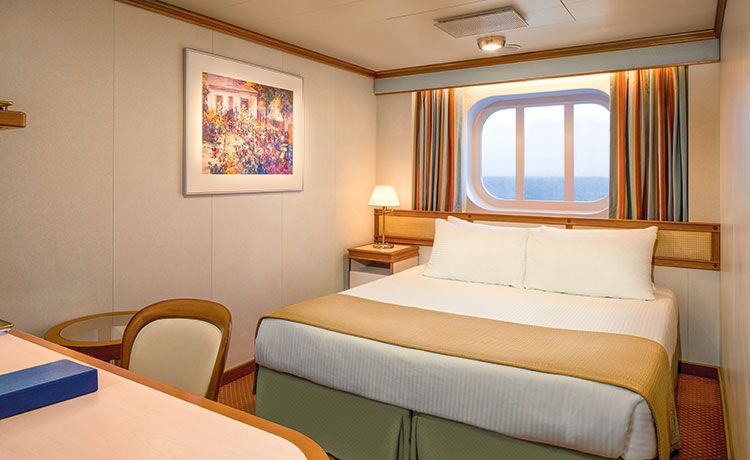
| Grade Code | From | To | |
| OZ | Oceanview (Obstructed) | £1,879 | £2,379 |
| OY | Oceanview (Obstructed) | £1,916 | £2,416 |
| OW | Oceanview (Obstructed) | £1,948 | £2,448 |
| OV | Oceanview (Obstructed) | £1,986 | £2,486 |
| OF | Oceanview | £2,079 | £2,579 |
| OC | Oceanview | £2,224 | £2,724 |
| O5 | Premium Oceanview | £2,379 | £2,879 |
Enjoy the added benefit of a view of the ocean from either a picture window or porthole that brings in natural light. This stateroom includes all the amenities of an interior room.
Stateroom features:
The images shown are for illustration purposes only and may not be an exact representation of what you find on the ship.
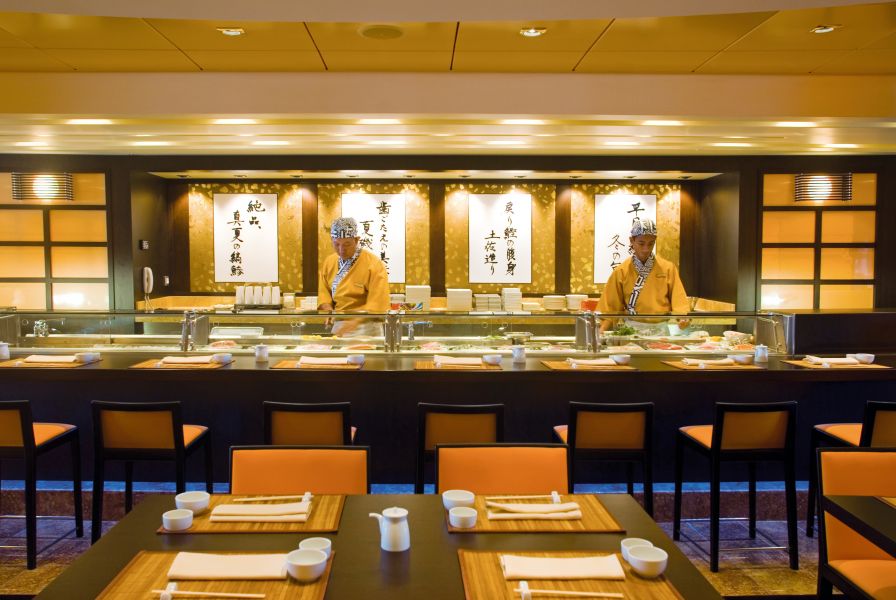
An exquisitely decorated traditional sushi bar, serving up sushi and sashimi expertly prepared before your eyes. Dine at the sushi bar or enjoy an elegant restaurant experience.
Additional charge applies.
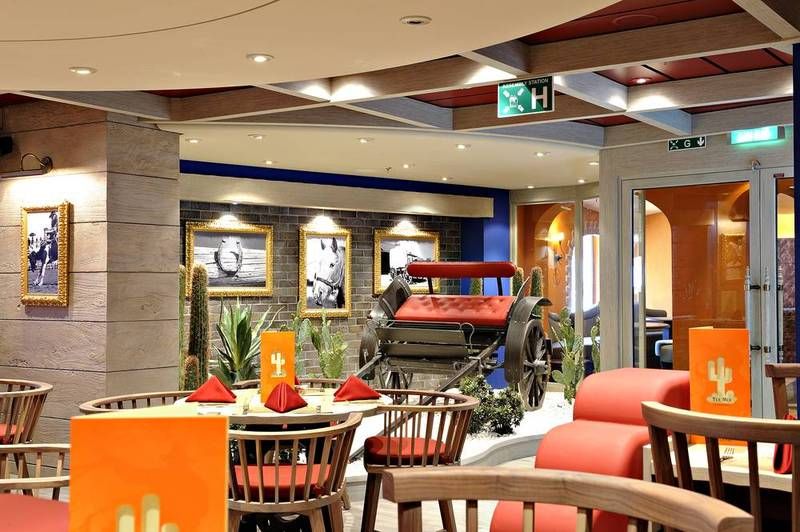
The Santa Fe Dining room is open for anytime dining at dinner time between 5.30pm and 10pm.
Santa Fe's speciality is chicken or steak fajitas.
The option of an 'always available menu' is also provided including steaks, chicken breast and salmon, along with healthy options.
The Santa Fe Dining Room is on the 6th Deck of the Diamond Princess.
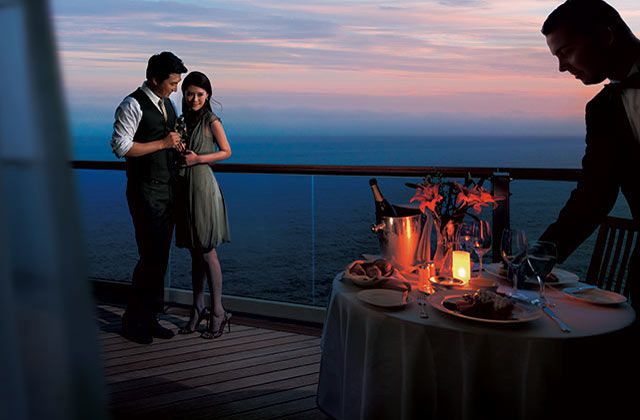
Choose a luxurious breakfast or experience the “ultimate” romantic dinner at sea: a sumptuous multi-course meal, including succulent lobster tail and juicy steak, your beverage of choice, hors d’oeuvres, all served right on the privacy of your own balcony by our dedicated waitstaff. Treat yourself to this unparalleled indulgence and savour food, views and memories that will never be forgotten.
Additional charges apply.
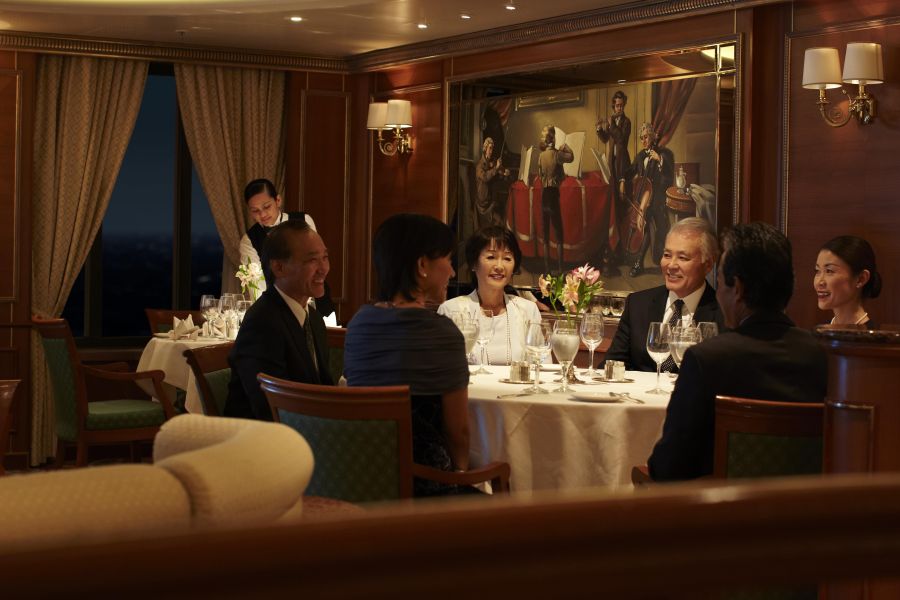
The Vivaldi Dining Room is open for traditional dining at 5.30pm or anytime dining between 8pm and 10pm.
The Vivaldi Dining Room is on the 5th Deck of the Diamond Princess.
The menu for all the main dining rooms serve the same four course dinner options with set choices with the exception of one speciality dish specific to each room.
The option of an 'always available menu' is also provided including steaks, chicken breast and salmon, along with Lotus Spa healthy options.
The images shown are for illustration purposes only and may not be an exact representation of what you find on the ship.
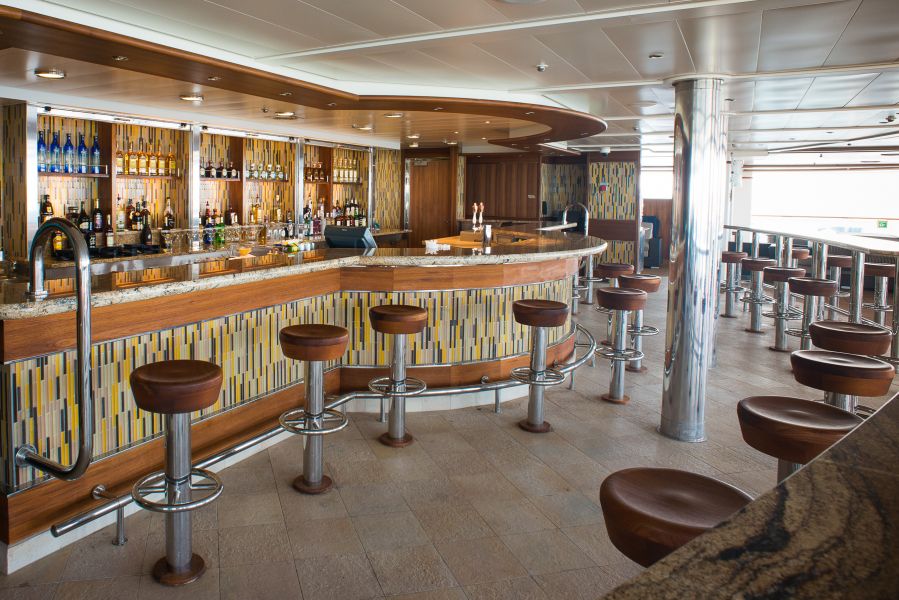
The Mermaids Tail bar serves the Neptune pool area and is located forward of the 14th Deck.
It also sells a small selection of sweets and chocolates, for guests to purchase whilst watching the movies under the stars at night on the large overhead TV screen.
The Oasis Bar serves the Sports Deck (16) and is located aft of the deck in between the two hot tubs.
Outrigger Bar is an outside bar aft of the 14th Deck serving the Horizon Terrace sundeck and pool below.
Calypso Bar serves the Calypso pool midship on the 14th Deck also.
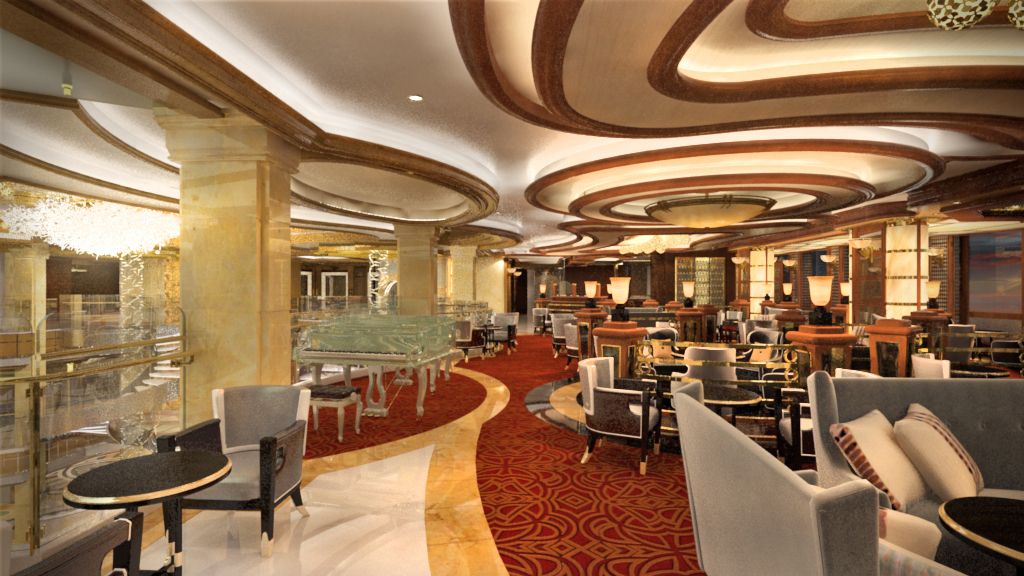
The Crooners Lounge and Bar, located midship on deck 7 opens from 1pm onwards and is reminiscent of a classic Martini bar.
Evening entertainment features live piano music with requests and name that tune elements. Here they also offer an enticing menu of 75 martinis, plus entertainers at spectacular duelling glass pianos.
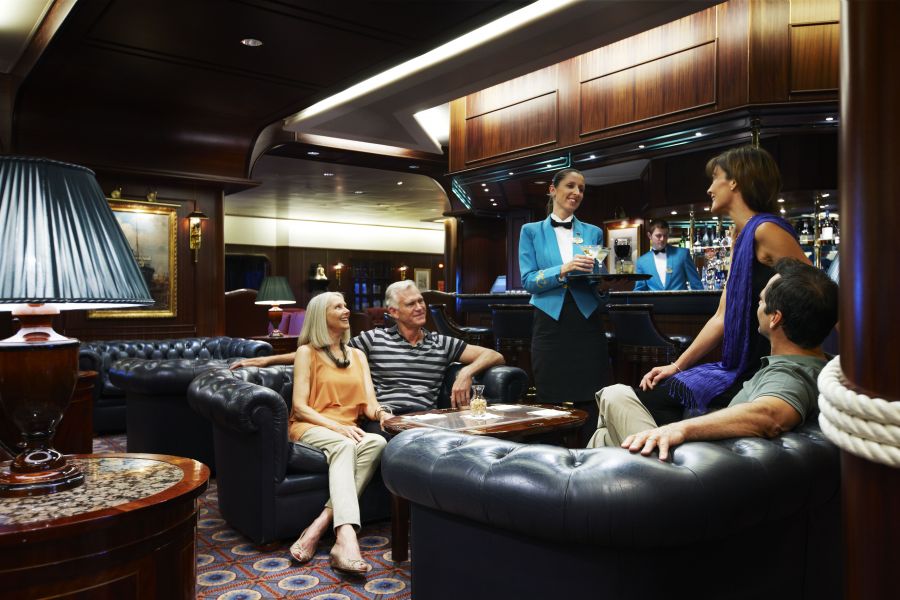
The Wheelhouse bar, located on the 7th Deck outside the theatre, serves premium beers, wines and spirits and is decorated in the style of a gentleman's club with leather armchairs and nautical artefacts.
It has its own dance floor, bar and stage where live music is played from.
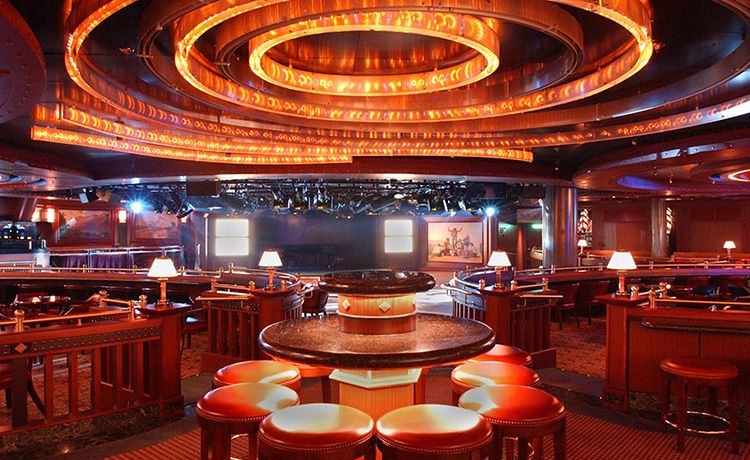
When the sun goes down and the moon comes up, it’s time to get your feet movin’ and your heart pumpin’ at Club Fusion. A little eclectic and a whole lot of fun, the dance floor lights and booming sound system invite you to get up and show off your moves and grooves. Karaoke contests, live performances and theme-parties like “60s British Invasion” are just a few of the nightly events that will have you on your feet.
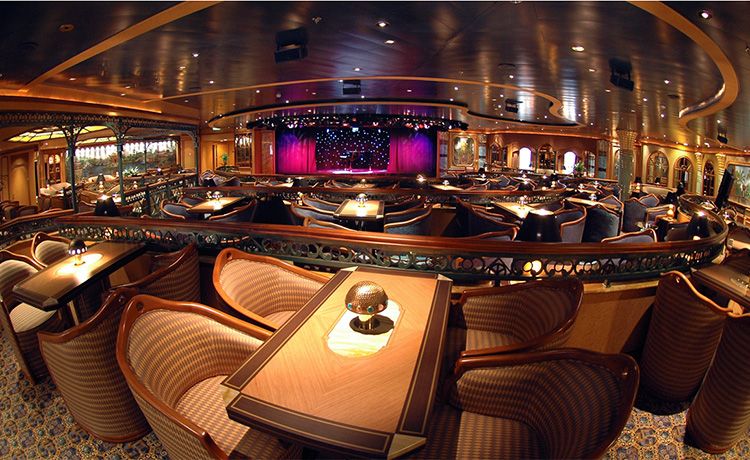
Explorers Lounge on the 7th Deck is Diamond Princess' second entertainment venue with its own dance floor, bar serving wine and cocktails and stage.
Entertainment on offer ranges from trivia quizzes during the day to comedians, live bands and themed nights in the evening.
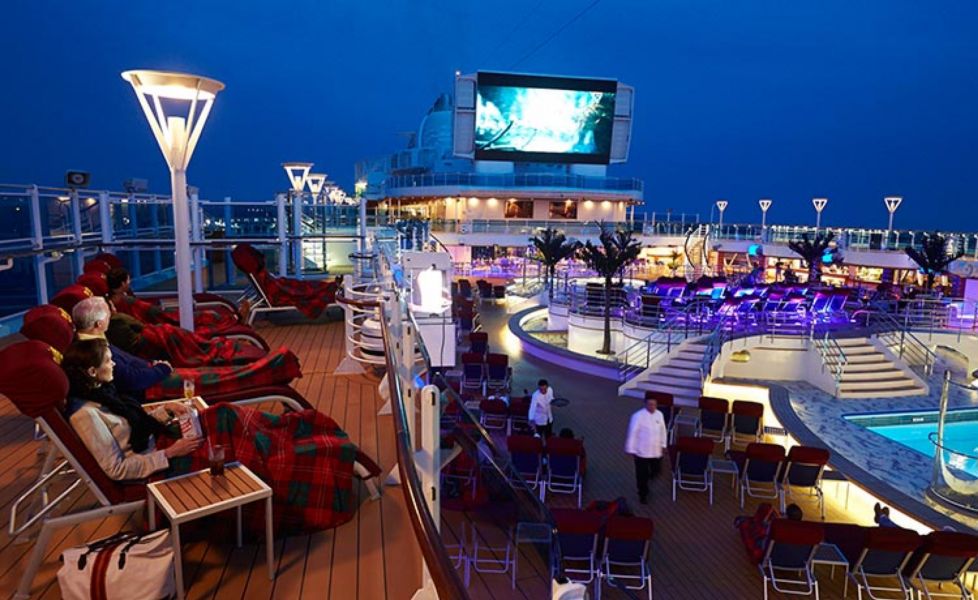
Throughout the day and night, our exclusive open-air poolside amphitheater is the go-to destination for feature films, thrilling concerts and exciting sporting events such as live football games. Cozy up under a fleece blanket in the comfortable lounger and feast on complimentary fresh-popped popcorn in the evening or delicious cookies and milk during the day, and enjoy that exciting car chase or mystery thriller on the giant screen.
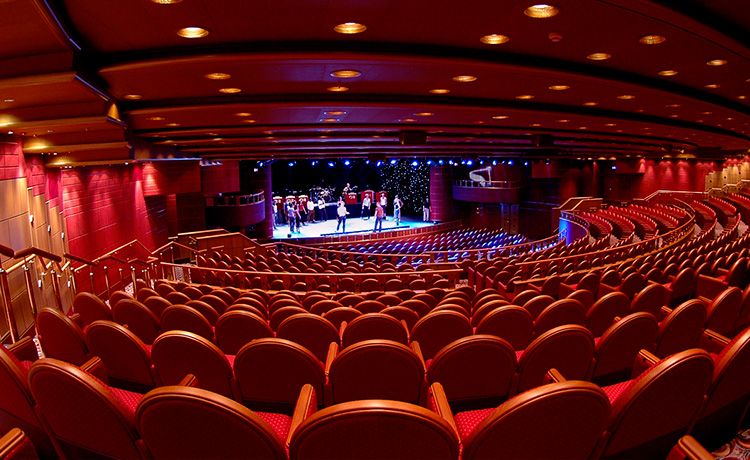
With dazzling stage sets, artists from around the globe, modern hits and timeless classics, the Princess Theatre, our largest theatre yet, showcases lavish, original productions with dynamic cast members in sumptuous surroundings. In this ultramodern theatre, relax in a plush seat with unobstructed sight lines as the velvet curtain goes up, a state-of-the-art lighting system illuminates the stage, and it’s on with the show!
The images shown are for illustration purposes only and may not be an exact representation of what you find on the ship.
The images shown are for illustration purposes only and may not be an exact representation of what you find on the ship.
| 10 nights aboard the Diamond Princess | |||
| Evening entertainment & Broadway style shows | |||
| Complimentary daily afternoon tea | |||
| Choice of traditional or anytime dining | |||
| Complimentary 24-hour room service | |||
| Speciality Restaurants (charges may apply) | |||
| Drinks package available | |||
| Port Taxes and Fees | |||
 | ABTA and ATOL Protection* | ||
Date 25th May 2025 |
Nts 10 |
Interior £1,823pp |
Oceanview £1,948pp |
Balcony £2,469pp |
Suite £3,119pp |
Date 25th May 2025 |
Nts 10 |
Interior £1,823pp |
Oceanview £1,948pp |
Balcony £2,469pp |
Suite £3,119pp |
| Interior staterooms from | £1,823pp | ||
| IA | Interior |  | |
| ID | Interior |  | |
| IC | Interior |  | |
| IE | Interior |  | |
| IF | Interior |  | |
| IB | Interior | £1,823pp | |
| Oceanview staterooms from | £1,948pp | ||
| O5 | Premium Oceanview |  | |
| OV | Oceanview (Obstructed) |  | |
| OZ | Oceanview (Obstructed) |  | |
| OC | Oceanview |  | |
| OW | Oceanview (Obstructed) | £1,948pp | |
| OY | Oceanview (Obstructed) |  | |
| OF | Oceanview |  | |
| Balcony staterooms from | £2,469pp | ||
| BD | Balcony |  | |
| BB | Balcony | £2,929pp | |
| BE | Balcony |  | |
| BC | Balcony | £2,725pp | |
| B4 | Premium Balcony |  | |
| BF | Balcony | £2,469pp | |
| BA | Balcony |  | |
| B2 | Premium Balcony |  | |
| Suite staterooms from | £3,119pp | ||
| S1 | Grand Suite |  | |
| S5 | Premium Suite |  | |
| S6 | Vista Suite |  | |
| S2 | Owner's Suite |  | |
| S4 | Penthouse Suite |  | |
| S3 | Penthouse Suite |  | |
| S8 | Two Bedroom Family Suite |  | |
| M1 | Club Class Mini-Suite | £3,588pp | |
| ME | Mini-Suite | £3,119pp | |
| MD | Mini-Suite |  | |
| MB | Mini-Suite |  | |
Fusion Cruises when selling travel arrangements is a trading name of The Midcounties Co-operative Ltd. Fusion Cruises is an Accredited Body Member of Midcounties Co-operative Travel Consortium. (ABTA:P6652, ATOL:6053).
Book with Confidence. We are a Member of ABTA which means you have the benefit of ABTA’s assistance and Code of Conduct.
Some of the flights and flight-inclusive holidays on this website are financially protected by the ATOL scheme but ATOL protection does not apply to all holiday and travel services offered on this website. This website will provide you with information on the protection that applies in the case of each holiday and travel service offered before you make your booking. If you do not receive an ATOL Certificate then the booking will not be ATOL protected. If you do receive an ATOL Certificate but all parts of your trip are not listed on it, those parts will not be ATOL protected. Please see our booking conditions for information, or for more information about financial protection and the ATOL Certificate go to: www.caa.co.uk
